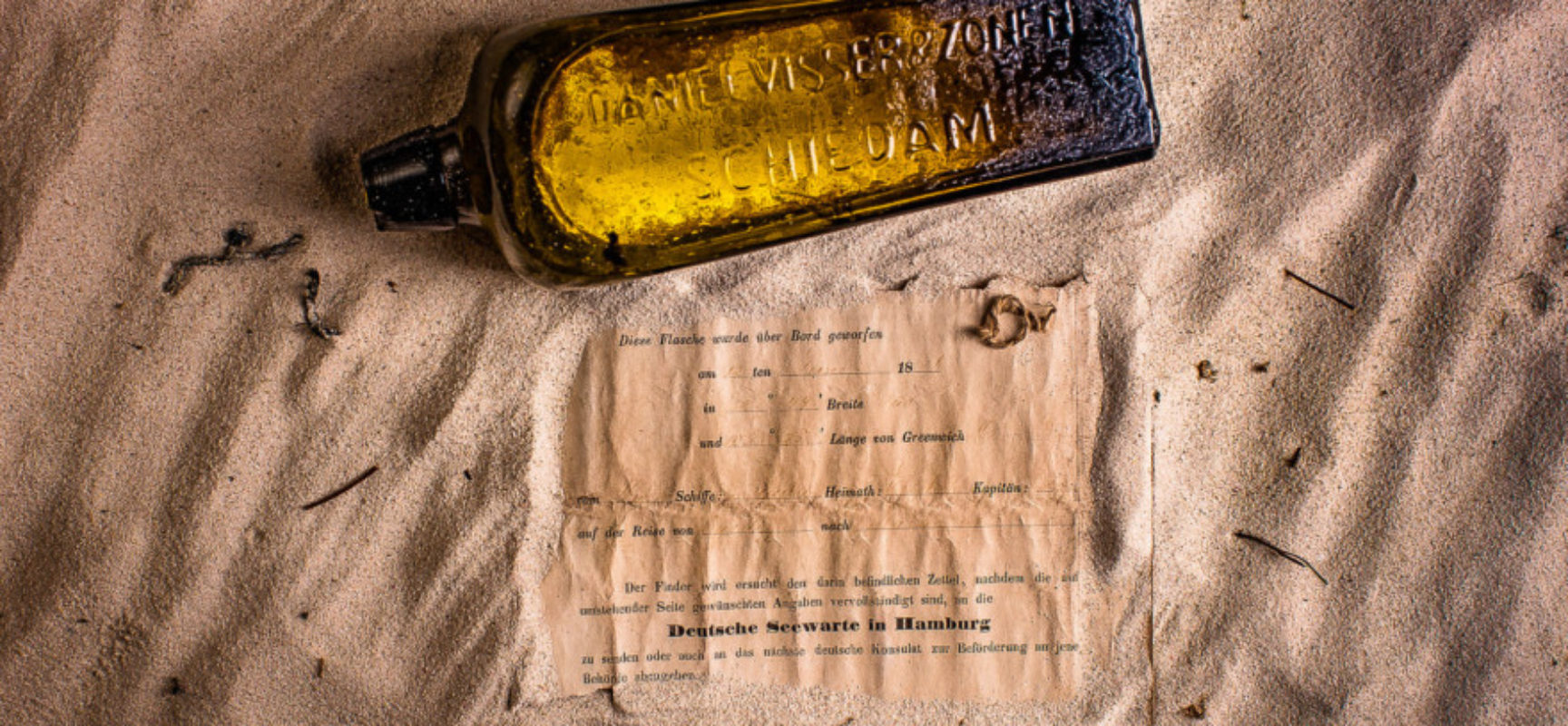On Sunday January 21st, 2018, Lancelin resident Tonya Illman came upon a bottle on a beach-side sand dune just north of Wedge Island in Western Australia. It would turn out that this bottle, containing a scrolled note, was tossed overboard from a ship in 1886. It remained “lost” for 131 years and 223 days. 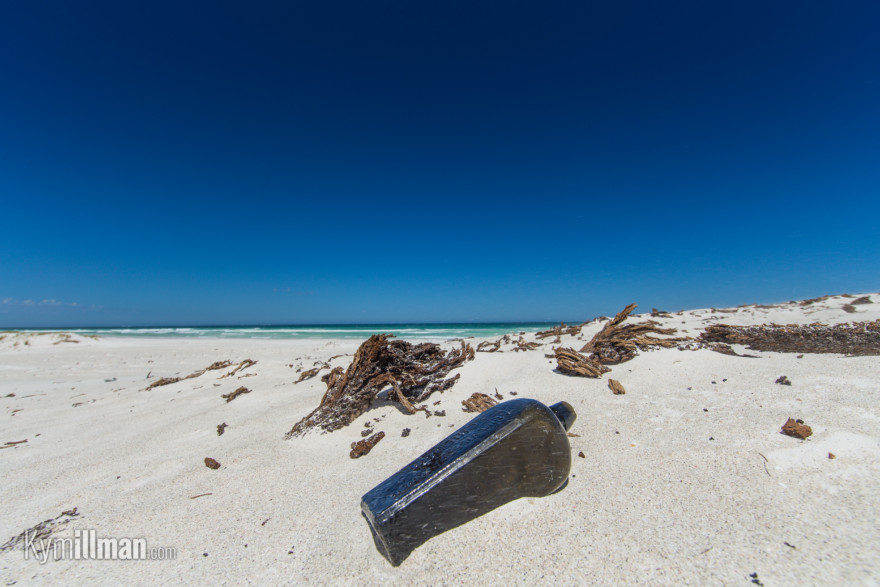 Tonya and her friend Grace Ricciardo were walking back to their vehicle on that Sunday when Tonya spotted the bottle. “I picked it up thinking it might look nice on display in my home and when I got back to the car, I handed it to my son’s girlfriend, Bree Del Borrello, to mind while I helped my husband get my son’s car out of the soft sand,” explained Tonya. “Bree noted there was no lid on the bottle and peering inside, caught a glimpse of what she initially thought was a cigarette. After upending the bottle, she discovered a neatly rolled, damp note, tied with a piece of string, and covered in fine Wedge sand.”
Tonya and her friend Grace Ricciardo were walking back to their vehicle on that Sunday when Tonya spotted the bottle. “I picked it up thinking it might look nice on display in my home and when I got back to the car, I handed it to my son’s girlfriend, Bree Del Borrello, to mind while I helped my husband get my son’s car out of the soft sand,” explained Tonya. “Bree noted there was no lid on the bottle and peering inside, caught a glimpse of what she initially thought was a cigarette. After upending the bottle, she discovered a neatly rolled, damp note, tied with a piece of string, and covered in fine Wedge sand.”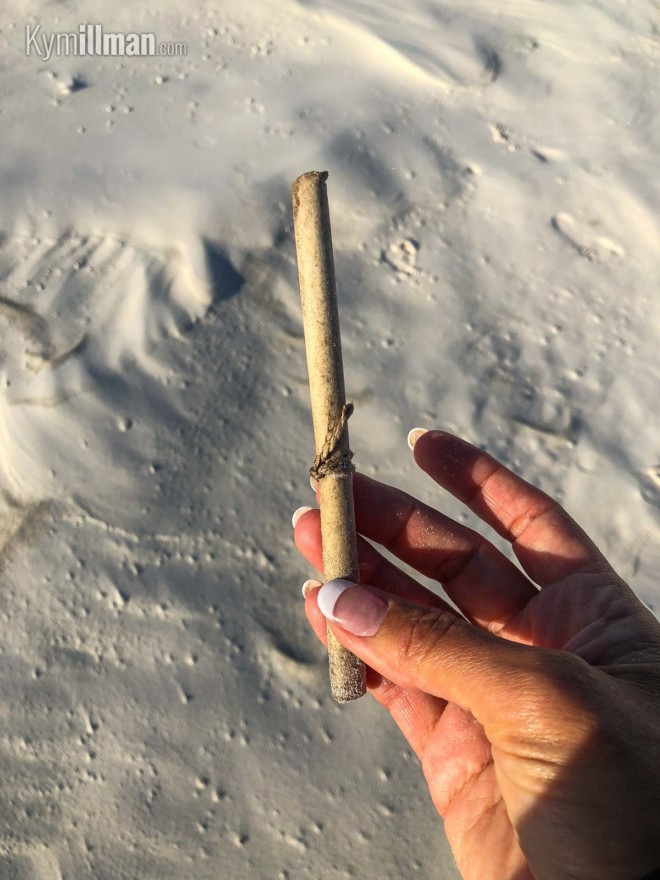
There was a lot of anticipation among the party as to what the “message in a bottle” might say but it was too wet to open without damaging the note, so it was transported back to Lancelin and placed in a warm oven for a few minutes to dry out that evening.
A short time later, Tonya unraveled the note in front of her family and the Ricciardos. It was immediately apparent that the note was old, very old. It was printed on both sides and the printed text was perfectly legible. The handwritten information had faded badly and wasn’t noticed until the next morning when the note was completely dry. 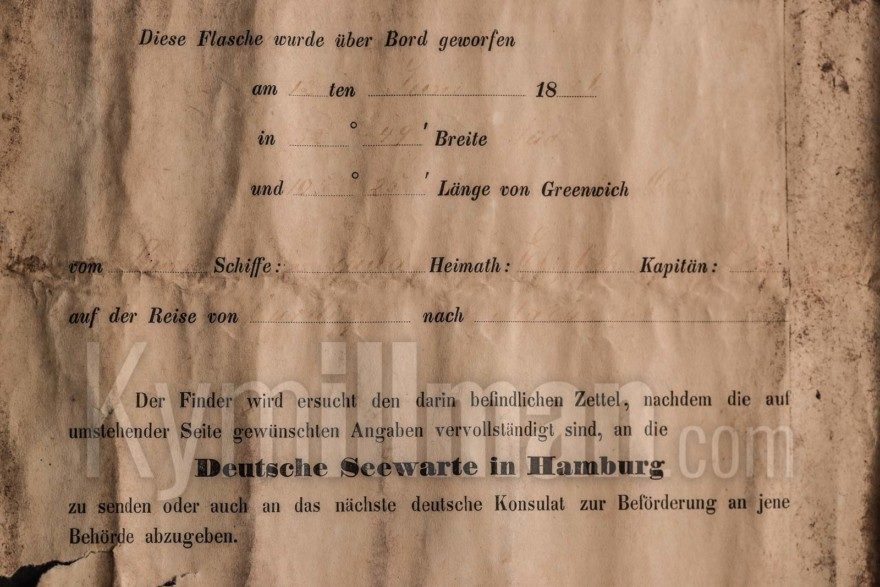
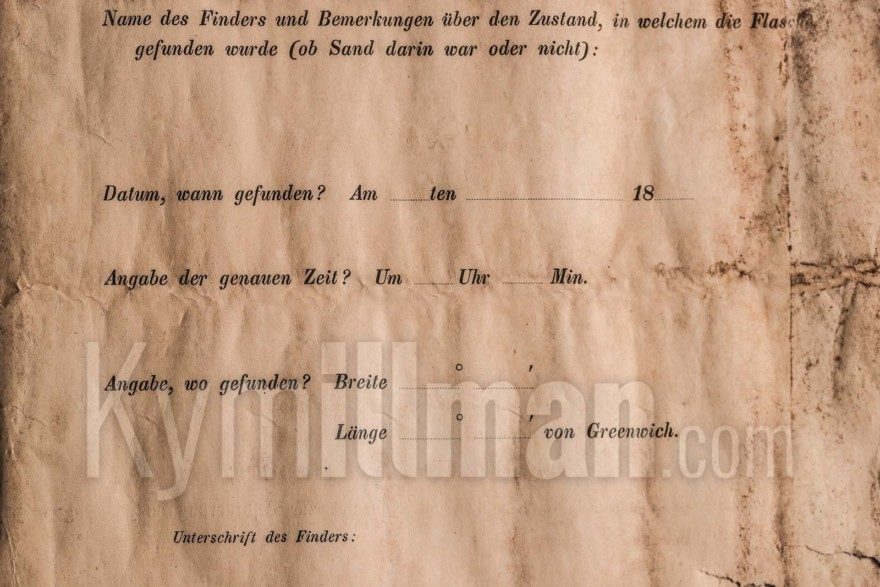 It was clear that it was thrown overboard on June 12th. The year was harder to establish but it has since been confirmed as 1886. This meant the note was out of human hands for 131 years and 223 days. The coordinates (32.49 S and 105.25 E) put the point at which it was thrown overboard around 950km from Wedge Island, Western Australia.
It was clear that it was thrown overboard on June 12th. The year was harder to establish but it has since been confirmed as 1886. This meant the note was out of human hands for 131 years and 223 days. The coordinates (32.49 S and 105.25 E) put the point at which it was thrown overboard around 950km from Wedge Island, Western Australia.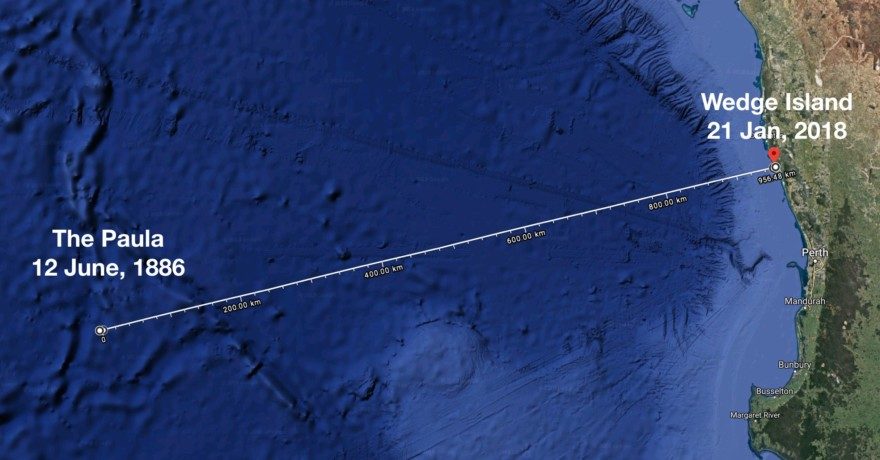
The rest of the handwriting was harder to decipher. From the note, Tonya’s husband, Kym, could make out the letters “aula” and guessed the ship might be Paula. The Assistant Curator at the WA Maritime Museum, Ross Anderson, was contacted and a day later he sent through some good news, saying he had located a boat of that name listed in the Lloyds Register 1883 (there were no registers for 1884 -1886), but it’s home port was listed as Marseille, France.![]() It would have been suitable for an Indian Ocean voyage and could well have been sold after 1883 to new owners and had a new home port. It was listed as a 320-ton gross sailing barque, iron frames with timber planking, felt and yellow metal sheathing, built in Lormont, Bordeaux, France, in 1859, owners L. Daver, Master Serett. A painting of the Paula (circa 1880) was discovered and forwarded to the Illmans.
It would have been suitable for an Indian Ocean voyage and could well have been sold after 1883 to new owners and had a new home port. It was listed as a 320-ton gross sailing barque, iron frames with timber planking, felt and yellow metal sheathing, built in Lormont, Bordeaux, France, in 1859, owners L. Daver, Master Serett. A painting of the Paula (circa 1880) was discovered and forwarded to the Illmans.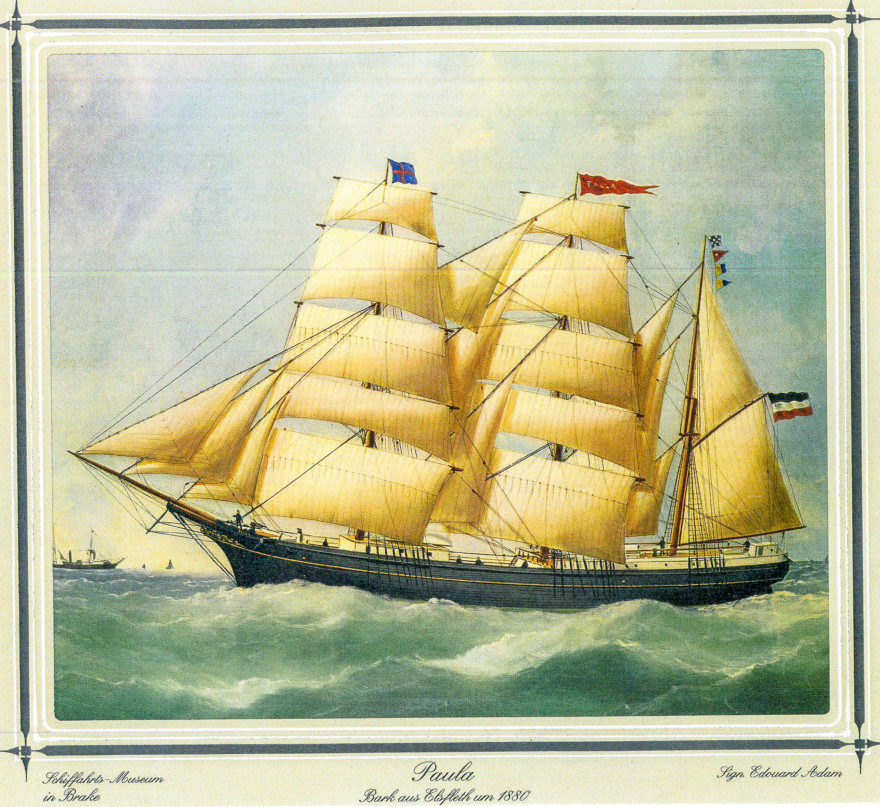 A week later, an actual photograph of the ship (below right) was uncovered.
A week later, an actual photograph of the ship (below right) was uncovered.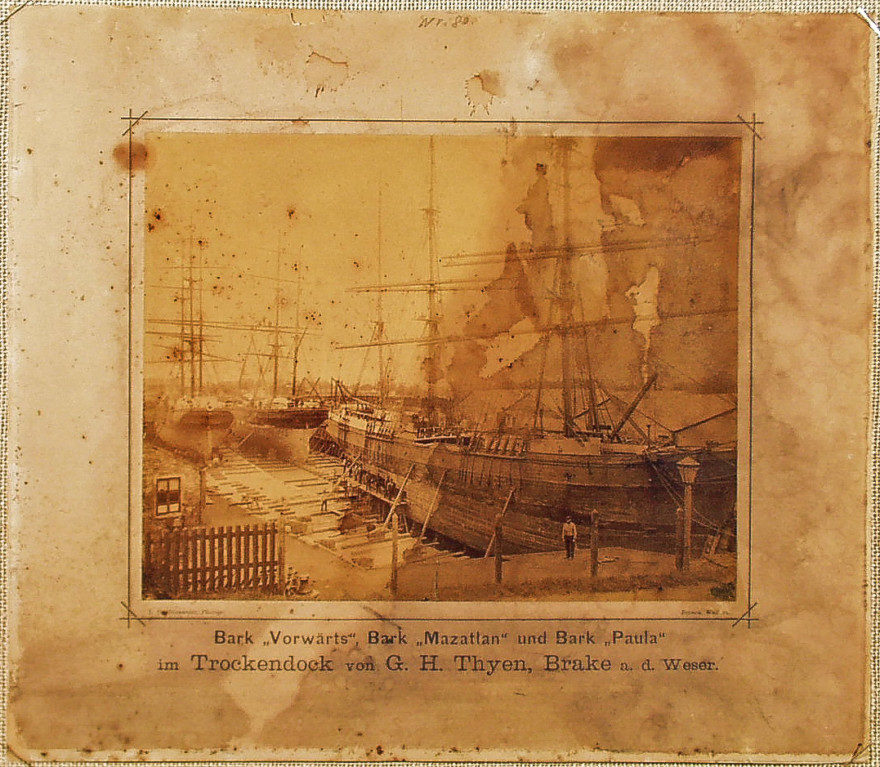
German maritime historian Christine Porr (who also works at the WA Maritime Museum) then found these mentions of the Paula, along with the captain’s name (O Diekmann), in an 1887 Journal of German Marine Meteorology.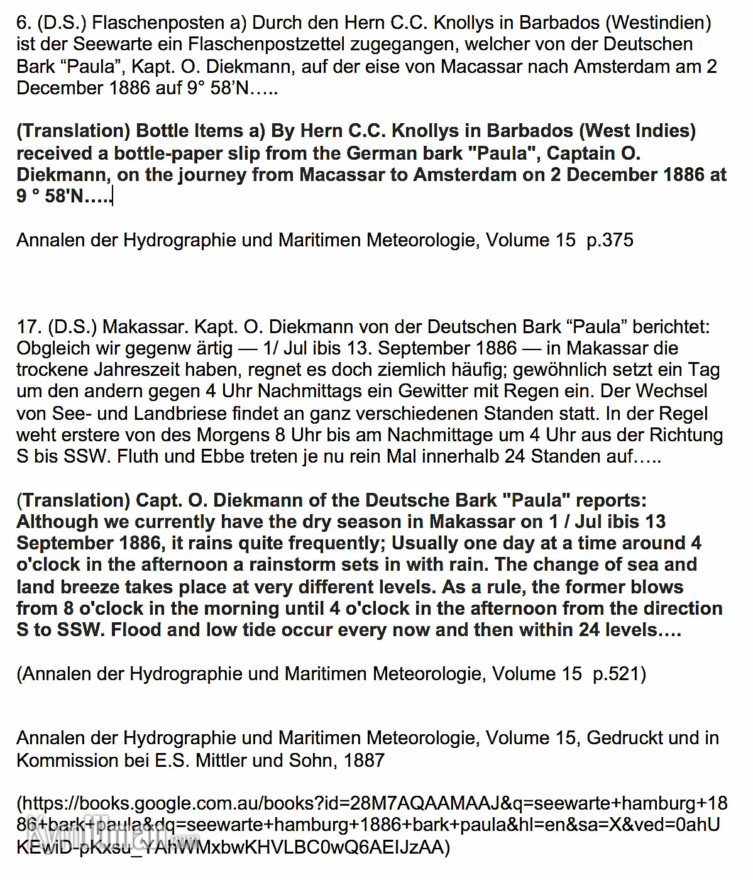 This clearly shows that a) the boat had the notes on board with one already being returned to Deutsche Seewarte in Hamburg, and b) the boat was in Macassar 11 days after the note found by Tonya was tossed overboard.
This clearly shows that a) the boat had the notes on board with one already being returned to Deutsche Seewarte in Hamburg, and b) the boat was in Macassar 11 days after the note found by Tonya was tossed overboard.
On the note the home port (Heimath) started with an E.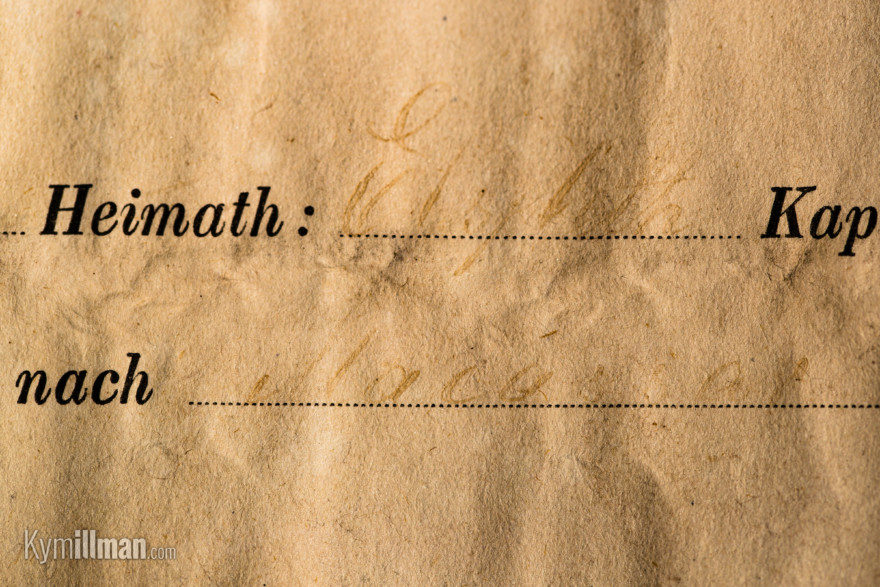 On January 25th, 2018, Dr Stephen Gapps of the Australian National Maritime Museum found a reference to the Paula in the Registrar Veritas for 1886.
On January 25th, 2018, Dr Stephen Gapps of the Australian National Maritime Museum found a reference to the Paula in the Registrar Veritas for 1886.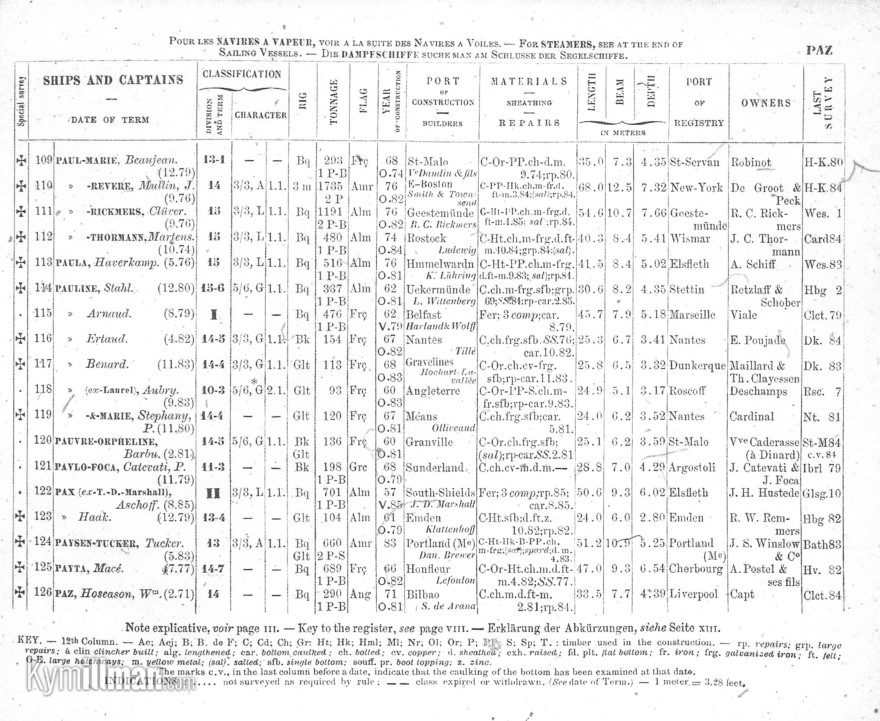 It had Haverkamp as the captain; however, it was established that O Diekmann took over after him and was captain from 1886-1889. Importantly, it confirmed the port of registry as Elsfleth, Germany.
It had Haverkamp as the captain; however, it was established that O Diekmann took over after him and was captain from 1886-1889. Importantly, it confirmed the port of registry as Elsfleth, Germany.
The “vom” field had the Illmans stumped for a couple of days; however, Tonya worked out that the word “dampf” was used in that field on two Deutsche Seewarte forms found online. This form only differs from the Illman’s by the year (189… instead of 18…) and the “Form I 2” in the bottom RH corner. Dampf is German for “steam”, the method of power, but the Paula was a sailboat and after a few minutes searching for other German words for sail ship it became apparent that the text said “Barque”. “We should have realised this the day prior after Ross Anderson from the WA Maritime Museum mentioned “German barque” in one of his emails.” confessed Kym.
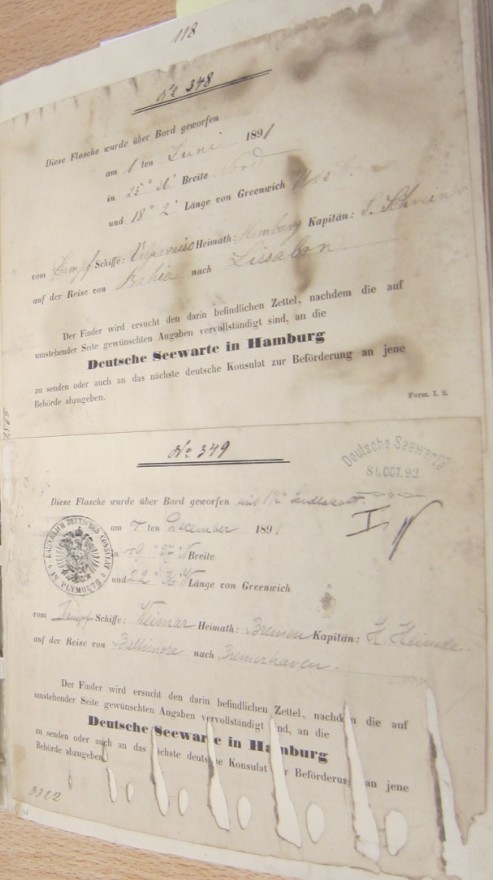
Photo: Clint Buffington / www.messageinabottlehunter.com
“der Reise von” means “the journey from”, which we read as Cardiff. The destination wasn’t clear to us until the WA Maritime Museum (via the German Weather Service) found a record of the boat sailing to Macassar, Dutch East Indies (now known as Sulawesi, Indonesia). It was probably carrying coal, which was Cardiff’s main export at the time. There was also another reference to the ship in the South Australian newspapers on May 21st, 1881. The ship was becalmed and needed provisions, albeit 5 years prior to this bottle being thrown overboard.
Deutsche Seewarte in Hamburg was the organisation that issued the notes. The German text asks the finder to fill in the back of the form with the details of where and when it was found (January 21st, 2018 at 5.45pm AWST at LAT: 30.79 LONG: 115.19) so that they could establish global current patterns. Below are the tracks of bottles tossed in the Indian Ocean and found some time later.
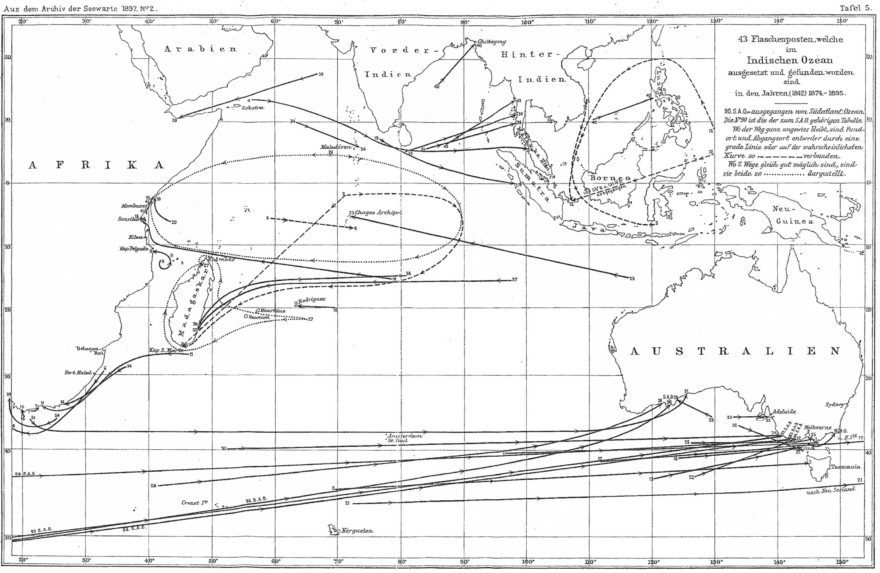
Source: German Federal Maritime and Hydrographic Agency
It’s thought that only 10% of the bottles thrown overboard were ever found. The organisation has gone through a couple of name changes since 1945 and is currently known as the Federal Maritime and Hydrographic Agency.
The bottle was made by Daniel Visser and Zonen, Schiedam. It is thought to have originally held gin and investigations show their bottles date back to 1880, so that further backed up the legitimacy of the find.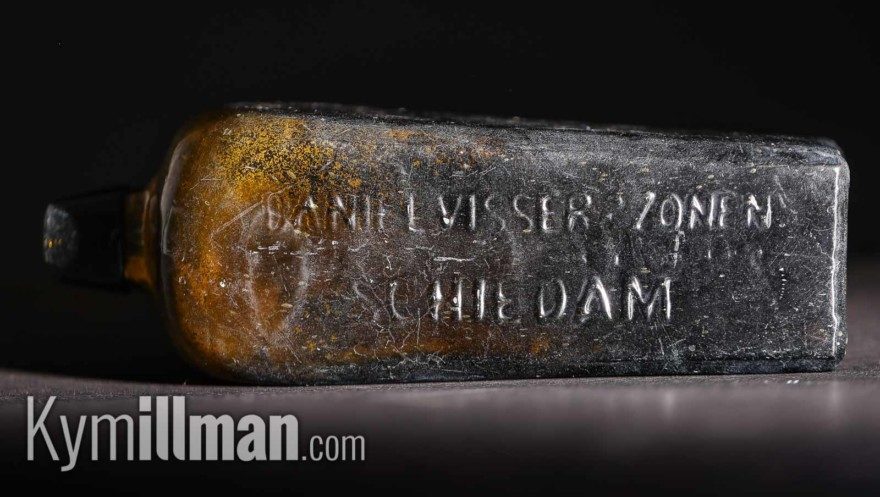 Remarkably the bottle had no lid on it when found about 50m east of the high water mark in the Wedge dunes. It was lying on its side with the top half sticking out of the sand. Its neck was raised slightly and it was found in an area where there was plenty of flotsam and jetsam visible. This area of the Wedge dunes would not have seen many cars through it in the days prior to the find and few, if any, people would have walked through the area.
Remarkably the bottle had no lid on it when found about 50m east of the high water mark in the Wedge dunes. It was lying on its side with the top half sticking out of the sand. Its neck was raised slightly and it was found in an area where there was plenty of flotsam and jetsam visible. This area of the Wedge dunes would not have seen many cars through it in the days prior to the find and few, if any, people would have walked through the area. 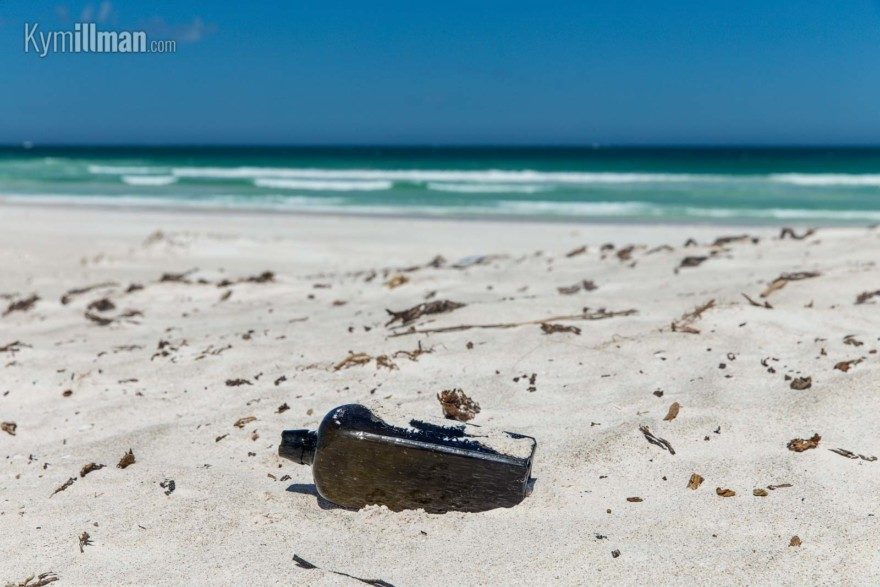 Heavy rain and strong winds associated with a cyclone in the north of the state swept through there for a number of days prior to the find probably leading to the bottle becoming exposed. There was about a third of a bottle of damp sand inside and the note was damp.
Heavy rain and strong winds associated with a cyclone in the north of the state swept through there for a number of days prior to the find probably leading to the bottle becoming exposed. There was about a third of a bottle of damp sand inside and the note was damp.
It took about 3 weeks to get proof that the find was genuine. The real breakthrough came when the German Weather Service advised they had located the ship’s meteorological Journal, the actual hard copy book. Here Captain O. Diekmann noted on the 12th June that a bottle had been thrown overboard (highlighted in red) that day at the very co-ordinates written on the note.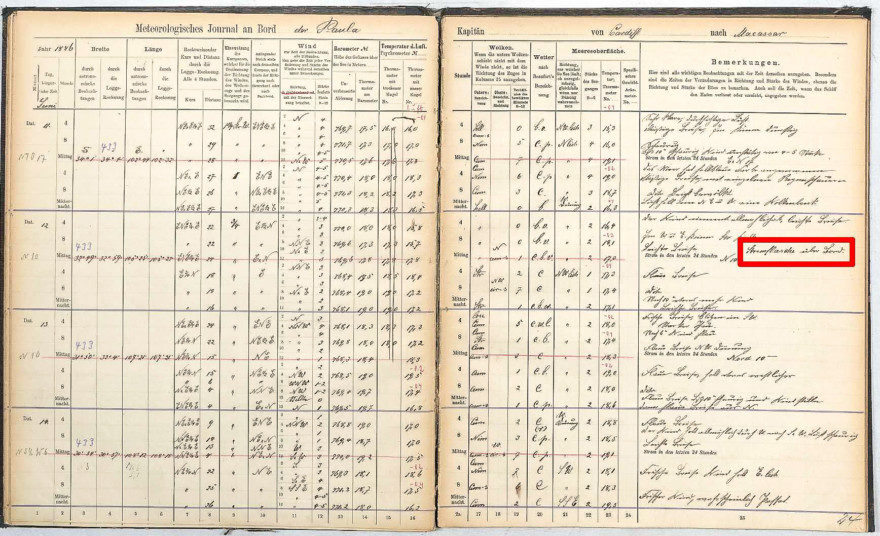
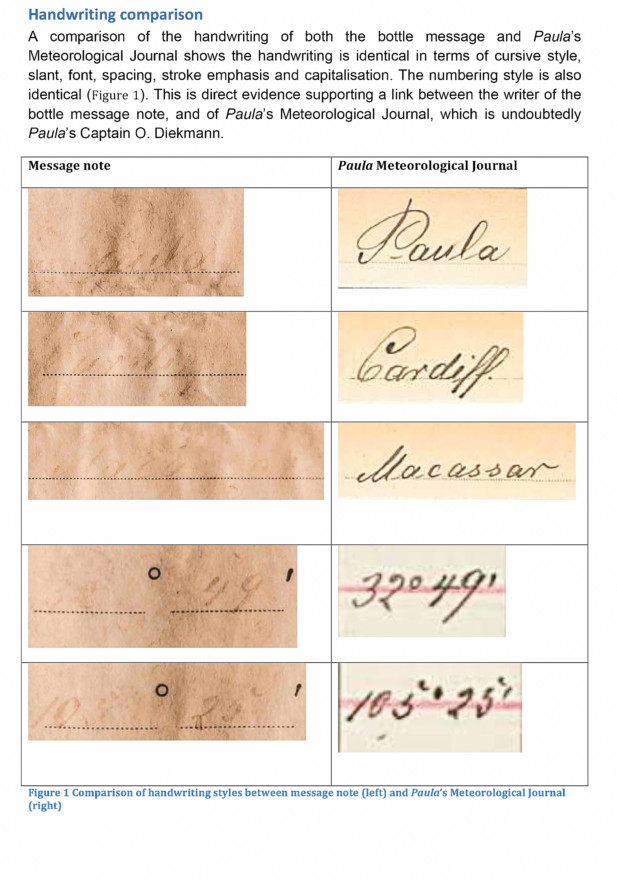 This was the final piece of proof required for both the German Hydrographic agency and the WA Maritime Museum to declare the bottle and note the real thing. At the time, the oldest recorded message in a bottle as verified by Guinness World Records, was 108 years, found in Amrum Germany in 2015. On Thursday March 8th, 2018 they updated their records noting Tonya Illman as the new holder of the Oldest Message In A Bottle world record. The new record of 131 years, 223 days eclipsed the previous record by more than 23 years.
This was the final piece of proof required for both the German Hydrographic agency and the WA Maritime Museum to declare the bottle and note the real thing. At the time, the oldest recorded message in a bottle as verified by Guinness World Records, was 108 years, found in Amrum Germany in 2015. On Thursday March 8th, 2018 they updated their records noting Tonya Illman as the new holder of the Oldest Message In A Bottle world record. The new record of 131 years, 223 days eclipsed the previous record by more than 23 years.
The last bottle and note to be found was in Denmark, Europe. It was returned to the Federal Maritime and Hydrographic Agency on the 7th of January, 1934 and was at sea for less than a month.
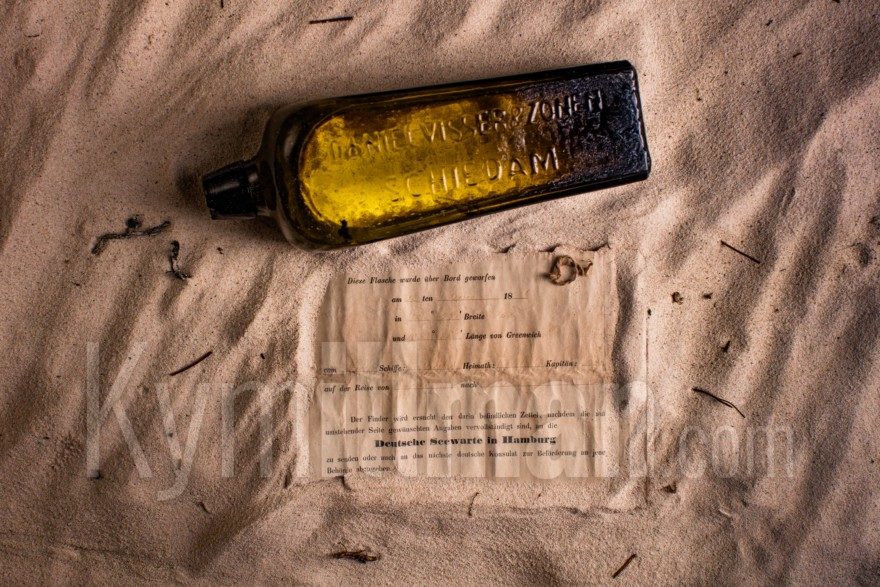
The WA Museum’s Assistant Curator, Ross Anderson (below and centre) has been closely involved in researching the bottle and note’s history. The Illman’s have loaned the find to the WA Museum for a 3-year period and while the bottle is stable enough be on show ad infinitum, the note will be on show initially for 3 months and then replaced by a facsimile to protect the original paper.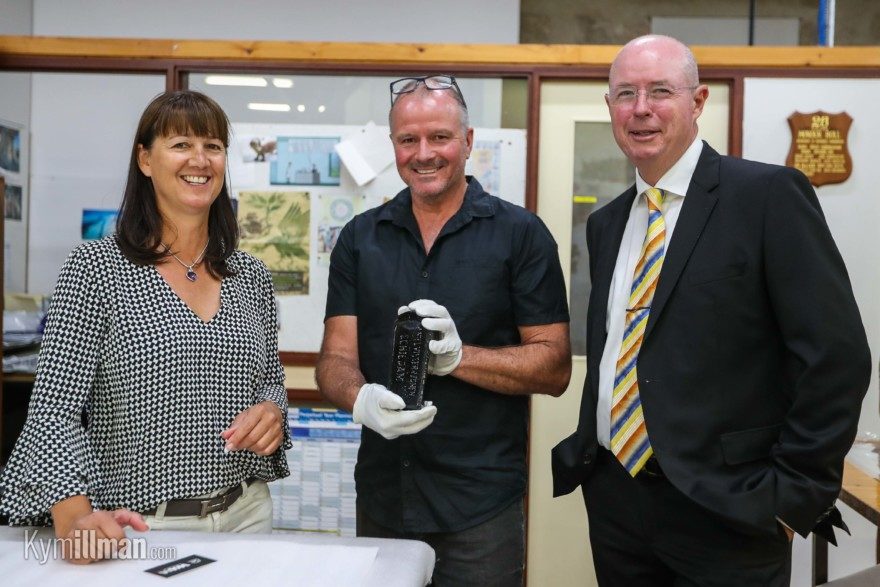
“This has been the most remarkable event in my life,” said a smiling Tonya Illman (below). “To think that this bottle has not been touched for nearly 132 years and is in perfect condition, despite the elements, beggars belief. I’m still shaking.”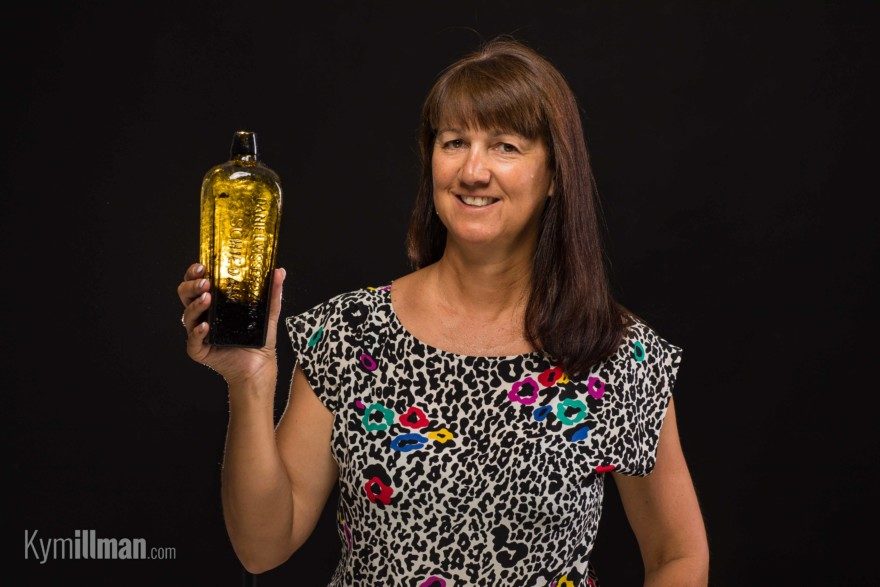 “It certainly consumed me for the first week.” admitted Tonya’s husband, Kym Illman. “It was like solving a giant puzzle and now that it’s been confirmed as legitimate, I can’t wait to share our excitement with others.”
“It certainly consumed me for the first week.” admitted Tonya’s husband, Kym Illman. “It was like solving a giant puzzle and now that it’s been confirmed as legitimate, I can’t wait to share our excitement with others.”
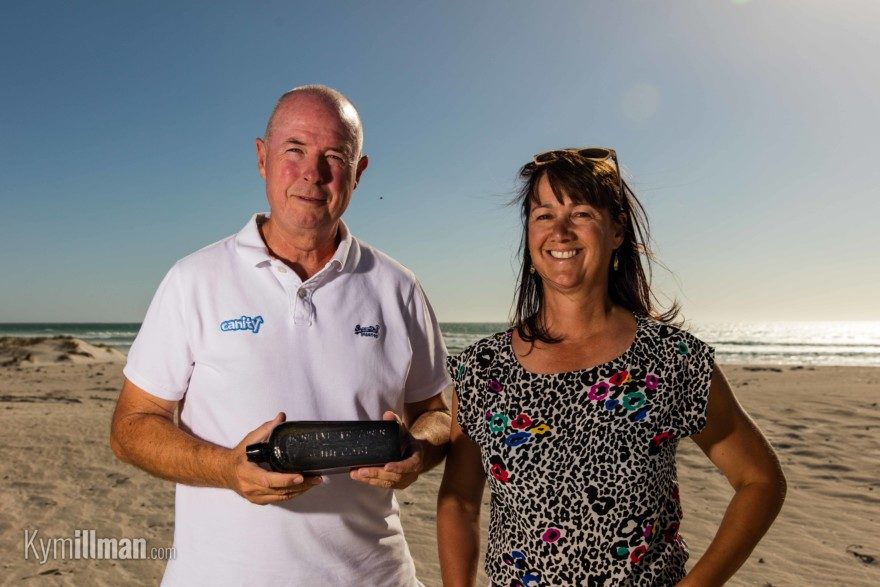
Watch these videos to learn more:
The find was made public on Tuesday March 6th at a press conference at the WA Maritime Museum with a copy of the front and back of the note presented to the HonoraryPerth German Consul, Torssten Ketelsen.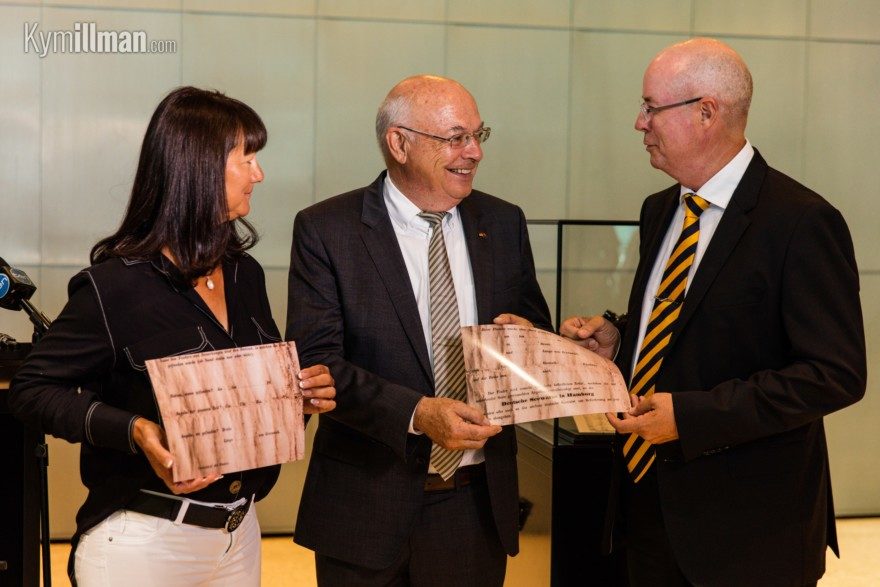
On Thursday March 8th, Guinness World Records confirmed the find was officially the Oldest Message in a Bottle, eclipsing the previous record by more than 23 years.
For media enquiries, please email Kym directly: kymillman@messagesonhold.com.au.
All images on this page are copyrighted and may not be used without express written permission.

 Perth Lancelin
Perth Lancelin



